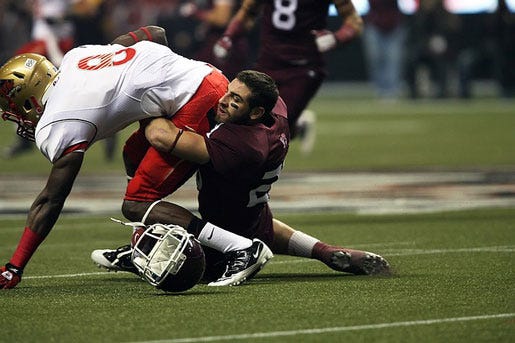Studying Subconcussions in Athletes
December 12, 2016
The EYE-SYNC medical device from SyncThink will be used to learn more about sub-concussive impacts and their effect on eye movement.
If a player takes a hard hit to the head during a football game, everyone immediately worries about a concussion. However, those same concerns don't typically arise when a soccer player heads a ball or a diver enters the water.
A new study will investigate these lesser, sub-concussive head impacts using a medical device that tracks eye movement. The EYE-SYNC device, made by Boston-based SyncThink, will be part of a sub-concussive study run by Keisuke Kawata, assistant professor of kinesiology at Indiana University, the company announced.
|
EYE-SYNC uses portable, virtual reality hardware to track and monitor patient eye movement. According to information on SyncThink's corporate website, the device can be used quickly, in a one-minute evaluation. Patients follow a circular pattern and their eye movement is analyzed to determine whether there is any worrisome change in their visual attention.
The EYE-SYNC device is limited to investigational use in the United States. According to the company's press release, the technology has been tested on "thousands of athletes and soldiers."
The Indiana University study, set to begin in February 2017, will examine sub-concussive impacts and effects on eye movement parameters seen in competitive divers and controlled soccer-heading simulation. There are also plans to expand the study to high school football and ice hockey, according to the release.
Kawata explained in the release, "By tracking sub-concussive impacts combined with various parameters, we have witnessed a glimpse, but plausible hope that some modalities could predict a concussion before it occurs."
As attention to the dangers of sports-related concussions has increased, researchers' understanding of subconcussive impact has expanded too. The Washington Post recently reported on research findings that showed temporary brain damage from heading soccer balls. Medtech companies have developed potential diagnostic and preventative medical device solutions for concussions and sports impact as well.
"Detection of subclinical neural impairments following repetitive sub-concussive head impacts is a study that's extremely important in the medical and sports verticals. From a sideline setting any added studies and information that can be immediately accessed will assist in keeping our athletes safer and help with recovery plans or return-to-play decisions," Daniel Beeler, chief technology officer of SyncThink, said in the release.
[Image courtesy of KEIJJ44/PIXABAY]
About the Author(s)
You May Also Like


.png?width=300&auto=webp&quality=80&disable=upscale)
